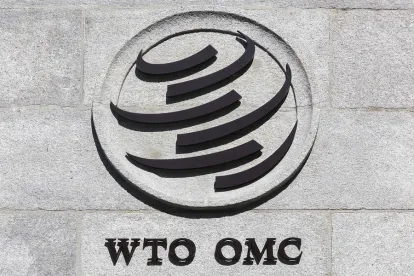US International Trade Commission’s response to unforeseen developments signals strong administration action on solar cell tariffs.
On December 28, 2017, the US International Trade Commission (USITC or Commission) addressed a significant issue in the continuing investigation under Section 201 of imports of crystalline silicon photovoltaic (CSPV) solar cells and modules. The Commission issued a 10-page report—the “Supplemental Report of the U.S. International Trade Commission Regarding Unforeseen Developments” (the Supplemental Report)—in response to the US Trade Representative’s request that the Commission identify any “unforeseen developments” that led to the increased imports of CSPV solar cells and modules into the United States as discussed in the petition submitted in May 2017.
We noted in our previous LawFlash on December 19 that contrary to news reports suggesting that this request signaled the administration’s shift away from imposing remedies, the purpose of this request was to help shield the ultimate action against a World Trade Organization (WTO) challenge. The Supplemental Report makes it clear that this is, in fact, the reason for the request, and the Commission’s response to the Trade Representative’s request attempts to do just that. In so doing, the Supplement Report reaffirms the Commission’s original conclusions and emphasizes that the increased imports of CSPV solar cells and modules were both “unforeseen” and the “substantial cause” of “serious harm” to the domestic industry for these products.
In less than two weeks, President Trump will issue his decision on the USITC’s recommended remedies, which could include tariff increases of 35% or more, tariff rate quotas, and other actions to support the US CSPV solar cells and modules industry. Whatever last vestiges of hope that may have remained that the president might steer away from imposing any remedies are likely gone. It appears that the opposition has accepted defeat for the most part. There has been little in the way of press releases or other opposition activity following the Commission’s release of its Supplemental Report, and little activity in the USITC case as well.
The USITC’s Supplemental Report
The Commission’s Supplemental Report reviews WTO decisions interpreting Article XIX:1(a) of the General Agreement on Tariffs and Trade 1994 (GATT) and concludes that a safeguard action (which is the basis for the 201 action) requires a specific finding that the harm to which the safeguard action applies is the result of “unforeseen developments.” Interpreting the WTO decisions, the Supplemental Report finds first that “unforeseen” means “unexpected” rather than unforeseeable, and then determines that increased imports of CPSV solar cell and module were indeed unexpected.
Although not discussed by the Commission, the WTO has not provided significant guidance regarding what might constitute “unforeseen developments”. As a result, the Commission was free to fashion its own standard. The Supplemental Report concludes that the “unforeseen developments” supporting the CSPV action relate all the way back to the expectations of the US negotiators to the GATT, the WTO, and to China’s accession to the WTO. The report also concludes that China is the ultimate culprit, first by engaging in documented dumping of, and providing improper subsidies for, the CSPV cells and modules, and subsequently by building large amounts of overcapacity in both China and other parts of the world. The collective over-development of capacity, laid directly at the feet of China’s “industrial policies, five-year plans, and other government support programs favoring renewable energy product manufacturing” (supp. rep. at 5) “led to vast overcapacity in China and subsequently in other countries…, which in turn ultimately resulted in the increased imports of CPSV products, causing serious injury to the domestic industry.” Id.
The Commission concludes that the negotiators for GATT, the WTO, and China’s accession “could not have foreseen at the time that the United States acceded to GATT in 1947, at the time that the United States acceded to the WTO, or at the time that the United States agreed to China’s accession to the WTO that the government of China would implement the industrial policies, plans, and government support programs such as those…that directly contradicted the obligations that China committed to undertake as part of its WTO accession.” Supplemental Report at 9-10. The report determines that safeguard remedies are appropriate because the United States was entitled to rely on a presumption that China would abide by its trade obligations and not engage in the “unexpected” behavior associated with China’s development of the CSPV cell and module markets.
The Supplemental Report serves an essential purpose of the safeguard action by addressing an issue that the WTO has found as necessary to sustain safeguard remedies. Historically, the WTO has rarely, if ever, sustained safeguard actions. Thus, the administration, by requesting the Supplemental Report, has at least enhanced the possibility that any action it takes will have an improved chance of success before the WTO. While a WTO review will take time, it is nonetheless important that the 201 action consider the appropriate criteria to improve its chances to survive such a review, since other nations are likely to bring such a challenge quickly after relief is ordered.
Finally, the issuance of the Supplemental Report is consistent with the intent to impose safeguard remedies, rather than to support the opposite action by the president. The precise nature of those remedies will be revealed shortly.
For more information, read our previous LawFlash: USITC Remedy Recommendations in Solar Cell Section 201 Investigation on the President’s Desk for Consideration. The LawFlash noted that at the end of January 2018, President Trump will decide how much additional tariff to impose on imports of solar cells and modules, as the US solar industry braces for the worst and continues to lobby against the recommended tariffs.



 />i
/>i

